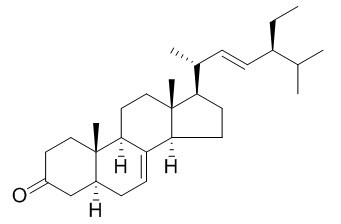Providing storage is as stated on the product vial and the vial is kept tightly sealed, the product can be stored for up to
24 months(2-8C).
Wherever possible, you should prepare and use solutions on the same day. However, if you need to make up stock solutions in advance, we recommend that you store the solution as aliquots in tightly sealed vials at -20C. Generally, these will be useable for up to two weeks. Before use, and prior to opening the vial we recommend that you allow your product to equilibrate to room temperature for at least 1 hour.
Need more advice on solubility, usage and handling? Please email to: service@chemfaces.com
The packaging of the product may have turned upside down during transportation, resulting in the natural compounds adhering to the neck or cap of the vial. take the vial out of its packaging and gently shake to let the compounds fall to the bottom of the vial. for liquid products, centrifuge at 200-500 RPM to gather the liquid at the bottom of the vial. try to avoid loss or contamination during handling.
J Agric Food Chem. 2010 Apr 28;58(8):4945-50.
New triterpenoids and other constituents from a special microbial-fermented tea-Fuzhuan brick tea.[Pubmed:
20307093 ]
METHODS AND RESULTS:
Phytochemical investigation of this material led to the identification of three new triterpenoids, 3beta,6alpha,13beta-trihydroxyolean-7-one (1), 3beta-acetoxy-6alpha,13beta-dihydroxyolean-7-one (2), and 3beta-O-(8-hydroxyoctanoyl)-12-oleanene (3), together with 11 known compounds, friedelin (4), beta-amyrone (5), beta-amyrin (6), alpha-Spinasterone (7), alpha-spinasterol (8), 22,23-dihydro-alpha-Spinasterone (9), 22,23-dihydro-alpha-spinasterol (10), alpha-phytol (11), alpha-tocopherol (12), alpha-tocoquinone (13), and caffeine (14). The structures of 1-13 were determined by spectroscopic and chemical methods. Compounds 1 and 2 are the first two examples of triterpenoids possessing a 6-hydroxy-7-one function. All of the compounds, except 6, 8, 10, 11, and 14, were isolated from tea and Camellia spp. for the first time. The antibacterial activities of 1 were assessed against some enteric pathogenic microbes.
CONCLUSIONS:
Compound 1 showed no cytotoxic activity against A-549, Bel-7402, and HCT-8 cell lines.



